Looking at & defining mystical & occult isms
-
Buddhism Definition
Buddhism, religion and philosophy that developed from the teachings of the Buddha (Sanskrit: “Awakened One”), a teacher who lived in northern India between the mid-6th and mid-4th centuries BCE (before the Common Era). Spreading from India to Central and Southeast Asia, China, Korea, and Japan, Buddhism has played a central role in the spiritual, cultural, and social life of Asia, and during the 20th century it spread to the West. Ancient Buddhist scripture and doctrine developed in several closely related literary languages of ancient India, especially in Pali and Sanskrit. In this article Pali and Sanskrit words that have gained …
https://www.britannica.com/topic/Buddhism
The existences is not of a god, but rather the existence of one's self. Mysticism in Buddhism is defined differently from other forms of mysticism. Rather than getting realization from a higher being or power, such as God, Buddhist mysticism is focused on contemplation, ideas, perspectives, and lack of all that.
https://acestrada.wordpress.com/2011/12/31/mysticism-the-buddhist-approach/
Guide to Buddhism, a tradition of personal spiritual development, including meditation, philosophy, ethics, different Eastern and Western strands of Buddhism and famous Buddhist figures.
https://www.bbc.co.uk/religion/religions/buddhism/ -
Hinduism Definition
Hinduism, major world religion originating on the Indian subcontinent and comprising several and varied systems of philosophy, belief, and ritual. Although the name Hinduism is relatively new, having been coined by British writers in the first decades of the 19th century, it refers to a rich cumulative tradition of texts and practices, some of which date to the 2nd millennium BCE or possibly earlier. If the Indus valley civilization (3rd–2nd millennium BCE) was the earliest source of these traditions, as some scholars hold, then Hinduism is the oldest living religion on Earth. Its many sacred texts in Sanskrit and vernacular languages served as a vehicle for spreading the religion to other parts of the world, though ritual and the visual and performing arts also played a significant role in its transmission. From about the 4th century CE, Hinduism had a dominant presence in Southeast Asia, one that would last for more than 1,000 years.
https://www.britannica.com/topic/Hinduism
Hinduism: Mysticism. One of the major trends of Indian religious philosophy is mysticism. This term can be misleading, however,… The term mystic is derived from the Greek noun mystes, which originally designated an initiate of a secret cult or mystery religion.
https://www.britannica.com/topic/mysticism -
Catholicism Mystics Definition
Christianity, major religion, stemming from the life, teachings, and death of Jesus of Nazareth (the Christ, or the Anointed One of God) in the 1st century CE. It has become the largest of the world’s religions and, geographically, the most widely diffused of all faiths. It has a constituency of more than two billion believers. Its largest groups are the Roman Catholic Church, the Eastern Orthodox churches, and the Protestant churches. The Oriental Orthodox churches constitute one of the oldest branches of the tradition but had been out of contact with Western Christianity and Eastern Orthodoxy from the middle of …
https://www.britannica.com/topic/Christianity
St. Teresa of Ávila, also called Saint Teresa of Jesus, original name Teresa de Cepeda y Ahumada, (born March 28, 1515, Ávila, Spain—died October 4, 1582, Alba de Tormes; canonized 1622; feast day October 15), Spanish nun, one of the great mystics and religious women of the Roman Catholic Church, and author of spiritual classics. She was the originator of the Carmelite Reform, which restored and emphasized the austerity and contemplative character of primitive Carmelite life. St. Teresa was elevated to doctor of the church in 1970 by Pope Paul VI, the first woman to be so honoured.
https://www.britannica.com/biography/Saint-Teresa-of-Avila
-
Judaism Kabbala Definition
Kabbala, (Hebrew: “Tradition”)also spelled Kabala, Kabbalah, Cabala, Cabbala, or Cabbalah, esoteric Jewish mysticism as it appeared in the 12th and following centuries. Kabbala has always been essentially an oral tradition in that initiation into its doctrines and practices is conducted by a personal guide to avoid the dangers inherent in mystical experiences. Esoteric Kabbala is also “tradition” inasmuch as it lays claim to secret knowledge of the unwritten Torah (divine revelation) that was communicated by God to Moses and Adam. Though observance of the Law of Moses remained the basic tenet of Judaism, Kabbala provided a means of approaching God directly. It thus gave Judaism a religious dimension whose mystical approaches to God were viewed by some as dangerously pantheistic and heretical.
The earliest roots of Kabbala are traced to Merkava mysticism. It began to flourish in Palestine in the 1st century CE and had as its main concern ecstatic and mystical contemplation of the divine throne, or “chariot” (merkava), seen in a vision by Ezekiel, the prophet (Ezekiel 1). The earliest known Jewish text on magic and cosmology, Sefer Yetzira (“Book of Creation”), appeared sometime between the 3rd and the 6th century. It explained creation as a process involving the 10 divine numbers (sefirot; see sefira) of God the Creator and the 22 letters of the Hebrew alphabet. Taken together, they were said to constitute the “32 paths of secret wisdom.”
A major text of early Kabbala was the 12th-century Sefer ha-bahir (“Book of Brightness”), whose influence on the development of Jewish esoteric mysticism and on Judaism in general was profound and lasting. The Bahir not only interpreted the sefirot as instrumental in creating and sustaining the universe but also introduced into Judaism such notions as the transmigration of souls (gilgul) and strengthened the foundations of Kabbala by providing it with an extensive mystical symbolism.
Spanish Kabbala
In the following century, the Sefer ha-temuna (“Book of the Image”) appeared in Spain and advanced the notion of cosmic cycles, each of which provides an interpretation of the Torah according to a divine attribute. Judaism, consequently, was presented not as a religion of immutable truths but as one for which each cycle, or eon, was said to have a different Torah.
Spain also produced the famous Sefer ha-zohar (“Book of Splendour”), a book that in some circles was invested with a sanctity rivaling that of the Torah itself. It dealt with the mystery of creation and the functions of the sefirot, and it offered mystical speculations about evil, salvation, and the soul.
Following their expulsion from Spain in 1492, the Jews were more than ever taken up with messianic hopes and eschatology, and Kabbala found wide favour.
Lurianic Kabbala
By the mid-16th century the unchallenged centre of Kabbala was Safed, Galilee, where one of the greatest of all Kabbalists, Isaac ben Solomon Luria, spent the last years of his life. According to Gershom Gerhard Scholem, a modern Jewish scholar of Kabbala, Luria’s influence was surpassed only by that of the Sefer ha-zohar. Lurianic Kabbala developed several basic doctrines: the “withdrawal” (tzimtzum) of the divine light, thereby creating primordial space; the sinking of luminous particles into matter (qellipot: “shells”); and a “cosmic restoration” (tiqqun) that is achieved by the Jew through an intense mystical life and unceasing struggle against evil. Lurianic Kabbalism was used to justify Shabbetaianism, a Jewish messianic movement of the 17th century.
Lurianic Kabbala also profoundly influenced the doctrines of modern Ḥasidism, a social and religious movement that began in the 18th century and still flourishes today in small but significant Jewish communities.
https://www.britannica.com/topic/Kabbala
Kabbalah; noun: Qabalah; noun: Cabala; noun: Cabbala; noun: Kabbala
the ancient Jewish tradition of mystical interpretation of the Bible, first transmitted orally and using esoteric methods (including ciphers). It reached the height of its influence in the later Middle Ages and remains significant in Hasidism. -
Mormonism & Transhumanism Definition
Mormonism is the collective name for a group of related churches, movements, and theologies that trace their origins back to the prophetic revelations of Joseph Smith Jr. (b. 1805–d. 1844). The movement splintered following the death of Smith, with the Utah-based Church of Jesus Christ of Latter-day Saints (LDS) becoming by far the largest institutional manifestation of Mormonism today. Mormonism claims to be a restoration of ancient Christianity, following a period of apostasy after the death of Christ’s original apostles. The movement began with a series of revelations to Smith in the 1820s in which God called him to be a prophet and then an angel directed him to a buried ancient record written on golden plates. Smith translated this record “by the gift and power of God” and published it as the Book of Mormon, which is one of four books considered by Mormons to be scripture (along with the Christian Bible, the Doctrine and Covenants, and Pearl of Great Price).
https://oxfordre.com/religion/view/10.1093/acrefore/9780199340378.001.0001/acrefore-9780199340378-e-75
The Mormon Transhumanist Association (MTA) is a nonprofit organization that syncretizes Mormonism and transhumanism. MTA sees parallels between transhumanist ideas, such as the technological singularity, and Mormon teachings. The majority of members are also members of The Church of Jesus Christ of Latter-day Saints (LDS Church), but the LDS Church is not affiliated with the MTA. MTA is affiliated with the world wide Humanity+ transhumanist organization.
Mormon Transhumanist Association
History and beliefs
MTA was founded by 14 members in 2006. It received IRC 501(c)(3) nonprofit status that same year. MTA and Humanity+ affiliated in 2006, and they renewed the affiliation in 2010.
As a transhumanist group within a traditional religion, MTA is unusual. However, MTA illustrates similarities between the functions and goals of transhumanism and traditional religions, such as a hope in the face of death for perpetual happiness and permanent youthfulness. MTA’s teachings, in relevant part, reflect Mormonism’s tenets regarding bodily and spiritual progress toward theosis. Because of such ideas, at least one scholar has argued that Mormon theology may lend itself better to reconciliation with transhumanism than does mainstream Christian theology
Demographics
During 2014, the MTA grew to include 480 members, an increase of 30% over the previous year. Of the members, 65% were in the United States, with other members located in Canada, South America, Europe, Africa, Australia, and Asia. The annual MTA survey completed in 2014 indicates that 62% of MTA members are also members of the LDS Church; that 59% identified as theist and 14% as atheist; that 53% identified as culturally progressive and 20% as culturally conservative; that 32% identified as economically progressive and 29% as economically conservative.
Activities
MTA organizes conferences on the intersection of technology, spirituality, science and religion. MTA co-sponsored the “Parallels and Convergences: Mormon Thought and Engineering Vision” conference at Claremont Graduate University in 2009, and the “Transhumanism and Spirituality” conference at the University of Utah in 2010. MTA also holds annual member conferences in Salt Lake City.
https://en.m.wikipedia.org/wiki/Mormon_Transhumanist_Association
Mystery religion, any of various secret cults of the Greco-Roman world that offered to individuals religious experiences not provided by the official public religions. They originated in tribal ceremonies that were performed by primitive peoples in many parts of the world. Whereas in these tribal communities almost every member of the clan or the village was initiated, initiation in Greece became a matter of personal choice. The mystery religions reached their peak of popularity in the first three centuries AD. Their origin, however, goes back to the earlier centuries of Greek history. Etymologically, the word mystery is derived from the …
https://www.britannica.com/topic/mystery-religion -
Ecumenism & Universalism Definition
Ecumenism, movement or tendency toward worldwide Christian unity or cooperation. The term, of recent origin, emphasizes what is viewed as the universality of the Christian faith and unity among churches. The ecumenical movement seeks to recover the apostolic sense of the early church for unity in diversity, and it confronts the frustrations, difficulties, and ironies of the modern pluralistic world. It is a lively reassessment of the historical sources and destiny of what followers perceive to be the one, holy, catholic, and apostolic church of Jesus Christ.
A brief treatment of ecumenism follows. For full treatment, see Christianity: Ecumenism.
The word ecumenism is derived from the Greek words oikoumenē (“the inhabited world”) and oikos (“house”) and can be traced from the commands, promises, and prayers of Jesus. After the International Missionary Conference held at Edinburgh in 1910, Protestants began to use the term ecumenism to describe the gathering of missionary, evangelistic, service, and unitive forces. During and after the Second Vatican Council (1962–65), Roman Catholics used ecumenism to refer to the renewal of the whole life of the church, undertaken to make it more responsive to “separated churches” and to the needs of the world.
The possibility of an ecumenical approach, in the modern sense, to Christianity increased, somewhat ironically, in the 17th and 18th centuries, when English dissenting sects and Pietist groups in Europe began to promote evangelistic, revivalistic, and missionary endeavours. This, along with the simultaneous effect of Enlightenment thought, broke down many of the traditional foundations that supported separate church structures. Other breakdowns in the traditional understandings of church unity led to new possibilities for experimentation in the 19th century. The separation of church and state in the United States signalled the need for civility and respect for religious rights in a land of many religions. The sending of Protestant missionaries at the beginning of the 19th century revealed the possibilities of cooperation across denominational lines at home and brought to light the scandal of competition and conflict among Christian denominations abroad.
Early 20th-century ecumenism derived impetus from the convergence of three movements: international Protestant missionary conferences, beginning with the Edinburgh Conference (1910) and taking shape as an institution in the International Missionary Council (1921); the Faith and Order Conferences on church doctrine and polity, commencing in the conference at Lausanne (1927); and the Life and Work Conferences on social and practical problems, beginning with the Stockholm Conference (1925). In 1937 at the Oxford Conference of Life and Work, proposals were drawn up to unite churches with Faith and Order. To this end, the World Council of Churches, a consultative and conciliar agent of ecumenism, working with national, denominational, regional, and confessional bodies, was inaugurated in Amsterdam in 1948. The International Missionary Council joined the World Council of Churches in 1961.
Protest movements against the developments that led to and continued in the World Council of Churches have produced an ecumenical convergence of their own. Most participants in this convergence prefer to be called “evangelical.” In the United States the National Association of Evangelicals was formed in 1943, in large part to counter the Federal Council of Churches, which began in 1908 and reorganized as the National Council of Churches in 1950. Evangelicals have many organizations that operate on an international level to channel specific cooperative energies.
In 1961 Pope John XXIII established the Secretariat for the Promotion of Christian Unity, and the Eastern Orthodox churches created the Pan-Orthodox Conference. Dialogues among the Roman Catholic, Eastern Orthodox, Oriental Orthodox, Pentecostal, and Protestant churches have brought general consensus on such issues as baptism, the Eucharist, and the nature of ministry. The Lutheran churches and the Roman Catholic Church have agreed on a common understanding of the doctrine of justification, even as Lutherans, Episcopalians, and the Reformed churches have attained surprising unanimity on certain theological issues.
https://www.britannica.com/topic/ecumenism
-
Pantheism Definition
1 : a doctrine that equates God with the forces and laws of the universe
2 : the worship of all gods of different creeds, cults, or peoples indifferently
also : toleration of worship of all gods (as at certain periods of the Roman empire)
Pantheism and Religion
Pantheistic ideas—and most importantly the belief that God is equal to the universe, its physical matter, and the forces that govern it—are found in the ancient books of Hinduism, in the works of many Greek philosophers, and in later works of philosophy and religion over the centuries. Much modern New Age spirituality is pantheistic. But most Christian thinkers reject pantheism because it makes God too impersonal, doesn't allow for any difference between the creation and the creator, and doesn't seem to allow for humans to make meaningful moral choices.
Examples of pantheism in a Sentence
Recent Examples on the Web
There’s a scene in The Wolf Gift where Reuben is staring up at the stars and musing about the nature of God, and his ruminations there almost seem to be a cosmic pantheism or something.
https://www.merriam-webster.com/dictionary/pantheism
The term ‘pantheism’ is a modern one, possibly first appearing in the writing of the Irish freethinker John Toland (1705) and constructed from the Greek roots pan (all) and theos (God). But if not the name, the ideas themselves are very ancient, and any survey of the history of philosophy will uncover numerous pantheist or pantheistically inclined thinkers; although it should also be noted that in many cases all that history has preserved for us are second-hand reportings of attributed doctrines, any reconstruction of which is too conjectural to provide much by way of philosophical illumination.
At its most general, pantheism may be understood positively as the view that God is identical with the cosmos, the view that there exists nothing which is outside of God, or else negatively as the rejection of any view that considers God as distinct from the universe.
However, given the complex and contested nature of the concepts involved, there is insufficient consensus among philosophers to permit the construction of any more detailed definition not open to serious objection from some quarter or other. Moreover, the label is a controversial one, where strong desires either to appropriate or to reject it often serve only to obscure the actual issues, and it would be a sad irony if pantheism revealed itself to be most like a traditional religion in its sectarian disputes over just what counts as ‘true pantheism.’ Therefore pantheism should not be thought of as a single codifiable position. Rather it should be understood as a diverse family of distinct doctrines; many of whom would be surprised—and, indeed, disconcerted—to find themselves regarded as members of a single household. Further, since the concept has porous and disputed boundaries there is no clear consensus on just who qualifies, no definitive roll-call of past pantheists. Given this situation the range of things that may be usefully said about all pantheisms is perhaps limited, but nonetheless a variety of concepts may be clarified, the nature of contentious issues explored, and the range of possible options more precisely mapped out.
https://plato.stanford.edu/entries/pantheism/ -
PANENTHEISM Definition
: the doctrine that God includes the world as a part though not the whole of his being
History and Etymology for panentheism
German panentheismus, from pan- + Greek en in + German theismus theism (from Greek theos god + German -ismus -ism
https://www.merriam-webster.com/dictionary/panentheism
Panentheism” is a constructed word composed of the English equivalents of the Greek terms “pan”, meaning all, “en”, meaning in, and “theism”, meaning God. Panentheism considers God and the world to be inter-related with the world being in God and God being in the world. It offers an increasingly popular alternative to both traditional theism and pantheism. Panentheism seeks to avoid either isolating God from the world as traditional theism often does or identifying God with the world as pantheism does. Traditional theistic systems emphasize the difference between God and the world while panentheism stresses God’s active presence in the world and the world’s influence upon God. Pantheism emphasizes God’s presence in the world but panentheism maintains the identity and significance of the non-divine. Anticipations of panentheistic understandings of God have occurred in both philosophical and theological writings throughout history (Hartshorne and Reese 1953; J. Cooper, 2006). However, a rich diversity of panentheistic understandings has developed in the past two centuries primarily in Christian traditions responding to scientific thought (Clayton and Peacocke 2004a). While panentheism generally emphasizes God’s presence in the world without losing the distinct identity of either God or the world, specific forms of panenethism, drawing from different sources, explain the nature of the relationship of God to the world in a variety of ways and come to different conclusions about the nature of the significance of the world for the identity of God.
https://plato.stanford.edu/entries/panentheism/
Panentheism (meaning "all-in-God", from the Ancient Greek πᾶν pân, "all", ἐν en, "in" and Θεός Theós, "God") is the belief that the divine pervades and interpenetrates every part of the universe and also extends beyond space and time.
https://en.m.wikipedia.org/wiki/Panentheism
Panentheism (Greek pan which means "all," en which means "in," and theos which means "God") is the position that God is greater than the universe, that the universe is in God, that he permeates every part of nature, is part of nature, extends beyond nature, and is also distinct from it. Panentheism should not be confused with pantheism which says God and nature are the same and cannot be distinguished. However, panentheism maintains that God is changing. "Panentheists think of God as a finite, changing, director of world affairs who works in cooperation with the world in order to achieve greater perfection in his nature . . . they believe the world is God's body."1
Panetheism maintains that God has two "polls": actuality and potentiality. God's actual existence and nature is changing, but His potential, what He can become, does not change.
https://carm.org/what-is-panentheism -
PANTHEISM AND PANENTHEISM
In Greek pan means "all," theos means "god," and en means "in." Pantheism means that all is God; panentheism, that all is in God. The two doctrines can be definitely distinguished. When considered together they may be called the pan-doctrines.
Although theism is often contrasted with pantheism and panentheism, the idea of all, or totality, is prominent in every form of theism as a doctrine of the high religions. Thus it occurs in the terms all-knowing, all-powerful, creator of all, and still others. Nevertheless, the most usual form of Western theology, sometimes called classical theism, holds or implies that the world of creatures is outside God.
Yet it is also said by those in this tradition that in God is knowledge of all things. Can anything be outside knowledge-of-all-things? To many great minds this has seemed an unendurable paradox. To escape this apparent absurdity of a knowing that does not include the known and yet also to avoid including the world in the divine life, Aristotle denied knowledge of particular things to God, who, he held, was aware only of universal forms or ideas. Divine thought then knows only itself: it is pure thinking of thinking. Therewith Aristotle fell into other paradoxes, including that of exalting as divine a being ignorant of us and our world and hence, it seems, inferior to us. Yet classical theists accepted Aristotle's formula "unmoved mover" (meaning unchanged changer) as descriptive of God. This conception implies that there can be nothing changing in God. Was then Paul, who said, referring to God, "For in him we live and move, and have our being" (Acts 12:28), a pan-theologian?
When we human beings know things other than our own minds and bodies, the known things seem to be outside us.
However, our knowledge of these outside things is extremely incomplete and uncertain. God must know everything at least as well and as certainly as we know our own pains and pleasures. Nothing can be so external to an all-knowing God as most things are to us. Accordingly, Plato, the first great philosophical theologian, believing in a divine Soul of the World (who knows us and whose body is the universe), made it clear that nothing was simply outside this deity: the universe as divine body is "in" the divine soul rather than the reverse. Plato was certainly a pan-theologian.
The essential difference between the two forms of pantheology is manifest in their answers to the question "Do the creatures have genuine freedom of decision making, or does God determine everything?" Classical pantheism was a form of theological determinism: God decides or determines everything, including our supposed decisions. Both the ancient Greek Stoics and Spinoza (1632–1677) held this view.
Panentheists object that, if one power determines all, there is, causally speaking, only one agent in all action. The Stoic-Spinozistic doctrine is an extreme monism rather than a genuine pluralism. Or, at best, its pluralism is unclear or ambiguous, for reality is active agency or nothing. As Plato said, "being is power"; for him every soul is "self-moved." This agrees with panentheism, which admits a plurality of active agents within the reality of the supreme agent.
https://www.encyclopedia.com/environment/encyclopedias-almanacs-transcripts-and-maps/pantheism-and-panentheism
-
New Ageism Definition
New Age movement, movement that spread through the occult and metaphysical religious communities in the 1970s and ʾ80s. It looked forward to a “New Age” of love and light and offered a foretaste of the coming era through personal transformation and healing. The movement’s strongest supporters were followers of modern esotericism, a religious perspective that is based on the acquisition of mystical knowledge and that has been popular in the West since the 2nd century AD, especially in the form of Gnosticism. Ancient Gnosticism was succeeded by various esoteric movements through the centuries, including Rosicrucianism in the 17th century and Freemasonry, theosophy, and ritual magic in the 19th and 20th centuries.
Origins
In the late 19th century Helena Petrovna Blavatsky, cofounder of the Theosophical Society, announced a coming New Age. She believed that theosophists (who embraced Buddhist and Brahmanic notions such as reincarnation) should assist the evolution of the human race and prepare to cooperate with one of the Ascended Masters of the Great White Brotherhood whose arrival was imminent. Blavatsky believed that, as the world’s hidden leaders, members of this mystical brotherhood guided the destiny of the planet. Her ideas contributed to expectation of a New Age among practitioners of Spiritualism and believers in astrology, for whom the coming of the new Aquarian Age promised a period of brotherhood and enlightenment.
Blavatsky’s successor, Annie Besant, predicted the coming of a messiah, or world saviour, who she believed was the Indian teacher Jiddu Krishnamurti. In the 1940s Alice A. Bailey, founder of the Arcane School (an organization that disseminated spiritual teachings), suggested that a new messiah, the Master Maitreya, would appear in the last quarter of the 20th century. Bailey also established the “Triangles” program to bring people together in groups of three to meditate daily. Participants in the program believed that they received divine energy, which they shared with those around them, thus raising the general level of spiritual awareness.
After Bailey’s death, former members of the Arcane School created a host of new independent theosophical groups within which hopes of a New Age flourished. These groups claimed the ability to transmit spiritual energy to the world and allegedly received channeled messages from various preternatural beings, especially the Ascended Masters of the Great White Brotherhood. For example, Scotland’s Findhorn Foundation believed that its purported contact with a variety of nature spirits produced spectacular agricultural feats, despite the poor soil and climate of the group’s settlement.
As expectations of a New Age increased in the 1960s, a new organization, the Universal Foundation, appeared. Its wealthy leader, Anthony Brooke, traveled widely beginning in the mid-1960s, predicting that an apocalyptic event would occur during the Christmas season of 1967. Although the event never took place, an international network of New Age groups emerged.
Birth Of The Movement
In 1970 American theosophist David Spangler moved to the Findhorn Foundation, where he developed the fundamental idea of the New Age movement. He believed that the release of new waves of spiritual energy, signaled by certain astrological changes (e.g., the movement of the Earth into a new cycle known as the Age of Aquarius), had initiated the coming of the New Age. He further suggested that people use this new energy to make manifest the New Age. Spangler’s view was in stark contrast to that of Bailey and her followers, who believed that the new era would arrive independent of human actions. Spangler’s perspective demanded an active response and shifted the responsibility for the coming of the New Age to those who believed in it.
Returning to the United States in the mid-1970s, Spangler became the major architect of the movement. He presented his ideas in a set of popular books beginning with Revelation: The Birth of a New Age (1976) and attracted many leaders from older occult and metaphysical organizations to the growing movement. The collapsing psychedelic movement also provided new supporters, including spokespersons such as noted psychologist Richard Alpert, who, like Timothy Leary, was an advocate of the use of hallucinogenic drugs to achieve mystical experiences. Alpert, however, found enlightenment in India, and returning to the West as Baba Ram Dass, he disavowed the drug experience and advocated more traditional spiritual disciplines. Simultaneously, periodicals were published to disseminate information and to create a sense of community within the decentralized movement. As the movement grew, bookstores opened that specialized in the sale of New Age books, videos, and meditative aids.
Fundamental Ideas
The New Age movement united a body of diverse believers with two simple ideas. First, it predicted that a New Age of heightened spiritual consciousness and international peace would arrive and bring an end to racism, poverty, sickness, hunger, and war. This social transformation would result from the massive spiritual awakening of the general population during the next generation. Second, individuals could obtain a foretaste of the New Age through their own spiritual transformation. Initial changes would put the believer on the sadhana, a new path of continual growth and transformation.
Although most followers of New Age teachings believe that the new era is still to come, Benjamin Crème announced that a world saviour, or Maitreya, would appear in 1982. The initial interest stirred by that prediction waned when the Maitreya failed to appear, but Crème continued to use his organization, Share International, to foretell the saviour’s imminent arrival.
https://www.britannica.com/topic/New-Age-movement -
Mysticism Definition
1 : the experience of mystical union or direct communion with ultimate reality reported by mystics
2 : the belief that direct knowledge of God, spiritual truth, or ultimate reality can be attained through subjective experience (such as intuition or insight)
3a : vague speculation : a belief without sound basis
b : a theory postulating the possibility of direct and intuitive acquisition of ineffable knowledge or power
Recent Examples on the Web
The resulting album sounds like a New Age playground of sorts, at once futuristic and grounded in a sort of old-world mysticism, as the esoteric chants on the title track convey.
— Rachel Hahn, Vogue, "The Argentinian Artist Whose Colorful Closet and Music Are Inspired by Postmodern Furniture," 24 Dec. 2018
Higher Frequencies Music, chemicals, and mysticism were some of the means by which people tried to access the love and connectedness at the core of the hippie ethos.
— Laird Borrelli-persson, Vogue, "1968 vs. 2018: 50 Years Later Fashion Is Still Playing With the Bohemian Rhapsody of the Late, Tumultuous ’60s," 14 Dec. 2018
https://www.merriam-webster.com/dictionary/mysticism
Mysticism, the practice of religious ecstasies (religious experiences during alternate states of consciousness), together with whatever ideologies, ethics, rites, myths, legends, and magic may be related to them.
The term mystic is derived from the Greek noun mystes, which originally designated an initiate of a secret cult or mystery religion. In Classical Greece (5th–4th century BCE) and during the Hellenistic Age (323 BCE–330 CE), the rites of the mystery religions were largely or wholly secret. The term mystes is itself derived from the verb myein (“to close,” especially the eyes or mouth) and signified a person who kept a secret. Early Christianity appropriated the technical vocabulary of the Hellenistic mysteries but later disavowed secrecy, resulting in a transformation of the meaning of mystes. In subsequent Christian usage, mystes, or mystic, referred to practitioners of doctrinally acceptable forms of religious ecstasy.
The Traditional Conception Of Mysticism
From late antiquity through the Middle Ages, Christians used prayer to contemplate both God’s omnipresence in the world and God in his essence. The soul’s ecstasy, or rapture, in contemplation of God was termed a “spiritual marriage” by St. Bernard of Clairvaux, the greatest mystical authority of the 12th century. In the 13th century the term unio mystica (Latin: “mystical union”) came into use as a synonym. During the same period the range of objects of contemplation was increased to include the Passion of Christ, visions of saints, and tours of heaven and hell. In the 17th and 18th centuries the enthusiasms of quaking, shaking, and other infusions of the Holy Spirit were also called mystical.
In the mid-19th century, after the Romantic movement had shifted the emphasis in much religious thinking from theology to individual experience, a growing interest in ecumenism led to the invention of the term mysticism and its extension to comparable phenomena in non-Christian religions. The competition between the perspectives of theology and science resulted in a compromise in which most varieties of what had traditionally been called mysticism were dismissed as merely psychological phenomena and only one variety, which aimed at union with the Absolute, the Infinite, or God—and thereby the perception of its essential unity or oneness—was claimed to be genuinely mystical.
The historical evidence, however, does not support such a narrow conception of mysticism. Even within the history of Christianity there were mystics—such as Pseudo-Dionysius the Areopagite in the 5th century and the anonymous author of the Cloud of Unknowing in the 14th—for whom the most desirable mystical experience or perception was not of unity but rather of nothing, or nothingness. Thus, St. Bonaventure, in addition to encouraging a program of mystical union with Christ in his death and resurrection, also recommended devotion to the wholly transcendent nothingness of Pseudo-Dionysius’s theology. In the 14th century, Meister Eckhart, along with his followers Heinrich Suso, Johann Tauler, and Jan van Ruysbroeck, all sought experiences in which their souls disappeared, leaving only the mind, emotion, or the will of God. In the 17th century, St. Teresa of Ávila, almost certainly in ignorance of historical precedents, demoted the communion described by St. Bernard to the status of a “spiritual betrothal,” instead emphasizing the soul’s disappearance in the “spiritual marriage.”
The complexity of the historical record is multiplied exponentially when one includes other religious traditions in the survey. Both Buddhism and Kabbala, the esoteric Jewish mysticism originating in the 12th century, emphasize nothingness rather than oneness, and the notion of oneness itself has many varieties in both Christianity and Hinduism. These facts are inconsistent with the postulation of a single unity or oneness that mystics everywhere experience or perceive. It is not that the Absolute, the Infinite, or God is One, and mystics experience and perceive this truth. Rather, the data support a psychological interpretation regarding a tendency of the mind to unify its contents in different ways, resulting in slightly different experiences on different occasions. Mystics do not experience or perceive an objectively existing unity; rather they formulate their own experiential unities in different ways.
The traditional conception of mysticism was finally abandoned by academic scholars in the 1970s. Since then, some scholars have rejected the category of mysticism as a fiction, while others have enlarged it to encompass all religious uses of alternate states of consciousness.
https://www.britannica.com/topic/mysticism -
Enlightenism Definition
Enlightism/Ferrmi Paradox
Every 31-60 Minutes
The ability of seeing evil and sightings it until it goes away. As if you could take care of your own unity and understanding that the supernatural, and spirit forces of other dimensions don't co-exist. Being able to know you are safe and secure just for allowing mind to keep negativity out of your life by the enlighten thought of Numerology itself
To think your ankh
"Sight Enlightenism to let your eye think"
https://www.urbandictionary.com/define.php?term=Enlightenism
Definition of enlightenment
1: the act or means of enlightening : the state of being enlightened
2 capitalized : a philosophical movement of the 18th century marked by a rejection of traditional social, religious, and political ideas and an emphasis on rationalism —used with the
3 Buddhism : a final blessed state marked by the absence of desire or suffering
Examples of enlightenment in a Sentence
the search for spiritual enlightenment
His comments failed to provide enlightenment.
Recent Examples on the Web
Since the election of Trump in 2016, the radical impulses of angry ‘wokeness’ have started to metabolize, among some, into a search for inner peace and spiritual enlightenment.
— Laird Borrelli-persson, Vogue, "1968 vs. 2018: 50 Years Later Fashion Is Still Playing With the Bohemian Rhapsody of the Late, Tumultuous ’60s," 14 Dec. 2018
The Constitution is best understood as a brilliant blend of traditional and enlightenment thinking, a Madisonian compromise if ever there was one.
— WSJ, "What Did the Enlightenment Really Give Us?," 13 Apr. 2018
https://www.merriam-webster.com/dictionary/enlightenment
enlightenment
the state of understanding something:
Meditation helps me achieve enlightenment and serenity.
world history The Enlightenment was the period in the 18th century in Europe when particular thinkers began to emphasize the importance of science and reason rather than religion and tradition.
https://dictionary.cambridge.org/us/dictionary/english/enlightenment
The Age of Enlightenment (also known as the Age of Reason or simply the Enlightenment) was an intellectual and philosophical movement that dominated the world of ideas in Europe during the 18th century, the "Century of Philosophy".
Some consider the publication of Isaac Newton's Principia Mathematica (1687) as the first major enlightenment work. French historians traditionally date the Enlightenment from 1715 to 1789, from the beginning of the reign of Louis XV until the French Revolution. Most end it with the turn of the 19th century. Philosophers and scientists of the period widely circulated their ideas through meetings at scientific academies, Masonic lodges, literary salons, coffeehouses and in printed books, journals, and pamphlets. The ideas of the Enlightenment undermined the authority of the monarchy and the Church and paved the way for the political revolutions of the 18th and 19th centuries. A variety of 19th-century movements, including liberalism and neo-classicism, trace their intellectual heritage to the Enlightenment.
The Enlightenment included a range of ideas centered on reason as the primary source of knowledge and advanced ideals such as liberty, progress, toleration, fraternity, constitutional government and separation of church and state. In France, the central doctrines of the Enlightenment philosophers were individual liberty and religious tolerance, in opposition to an absolute monarchy and the fixed dogmas of the Roman Catholic Church. The Enlightenment was marked by an emphasis on the scientific method and reductionism, along with increased questioning of religious orthodoxy—an attitude captured by the phrase Sapere aude (Dare to know).
Significant people and publications
The Age of Enlightenment was preceded by and closely associated with the scientific revolution. Earlier philosophers whose work influenced the Enlightenment included Bacon and Descartes. The major figures of the Enlightenment included Beccaria, Diderot, Hume, Kant, Montesquieu, Rousseau, Adam Smith, and Voltaire. Some European rulers, including Catherine II of Russia, Joseph II of Austria and Frederick II of Prussia, tried to apply Enlightenment thought on religious and political tolerance, which became known as enlightened absolutism. Benjamin Franklin visited Europe repeatedly and contributed actively to the scientific and political debates there and brought the newest ideas back to Philadelphia. Thomas Jefferson closely followed European ideas and later incorporated some of the ideals of the Enlightenment into the Declaration of Independence (1776). One of his peers, James Madison, incorporated these ideals into the United States Constitution during its framing in 1787.
The most influential publication of the Enlightenment was the Encyclopédie (Encyclopaedia). Published between 1751 and 1772 in thirty-five volumes, it was compiled by Diderot, d'Alembert (until 1759) and a team of 150 scientists and philosophers. It helped spread the ideas of the Enlightenment across Europe and beyond. Other landmark publications were Voltaire's Dictionnaire philosophique (Philosophical Dictionary; 1764) and Letters on the English (1733); Rousseau's Discourse on Inequality (1754) and The Social Contract (1762); Adam Smith's The Theory of Moral Sentiments (1759) and The Wealth of Nations (1776); and Montesquieu's The Spirit of the Laws (1748). The ideas of the Enlightenment played a major role in inspiring the French Revolution, which began in 1789. After the Revolution, the Enlightenment was followed by the intellectual movement known as Romanticism.
https://en.m.wikipedia.org/wiki/Age_of_Enlightenment

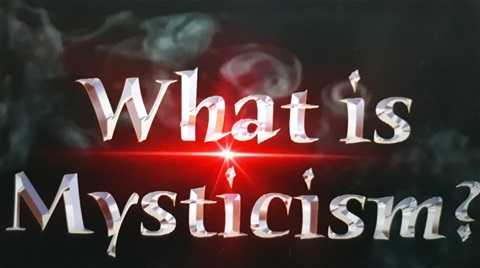

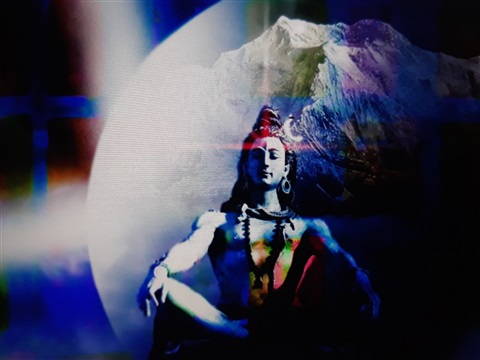
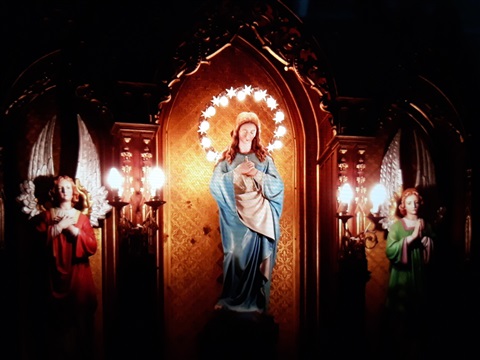

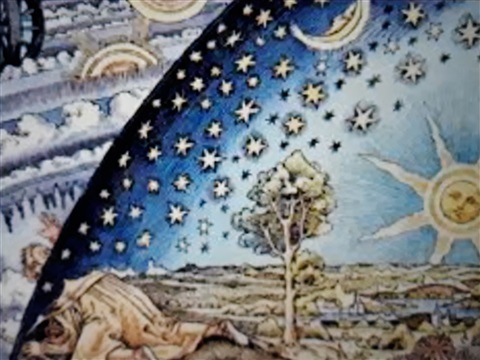
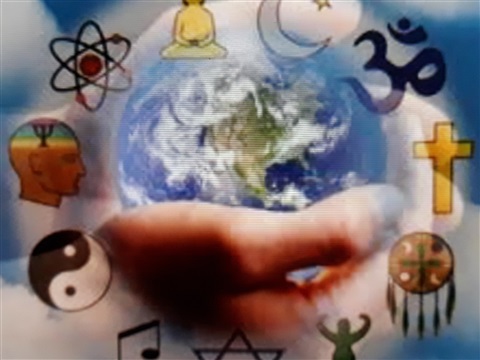
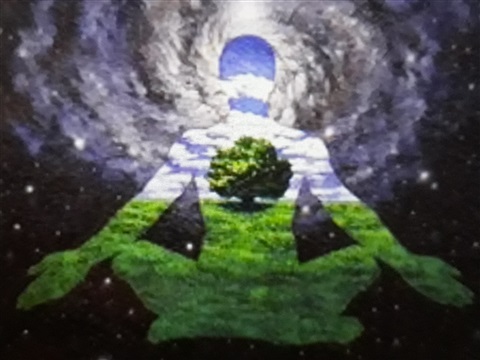

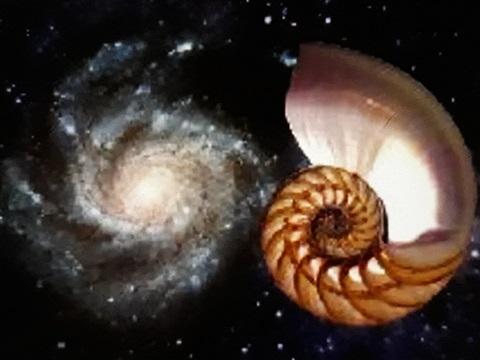
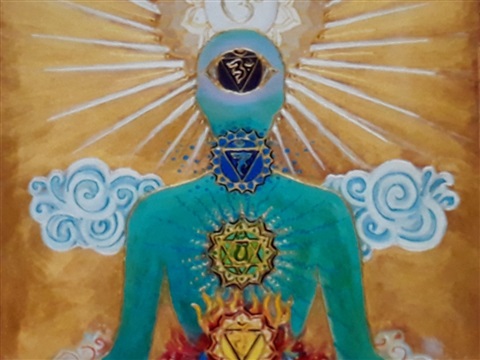


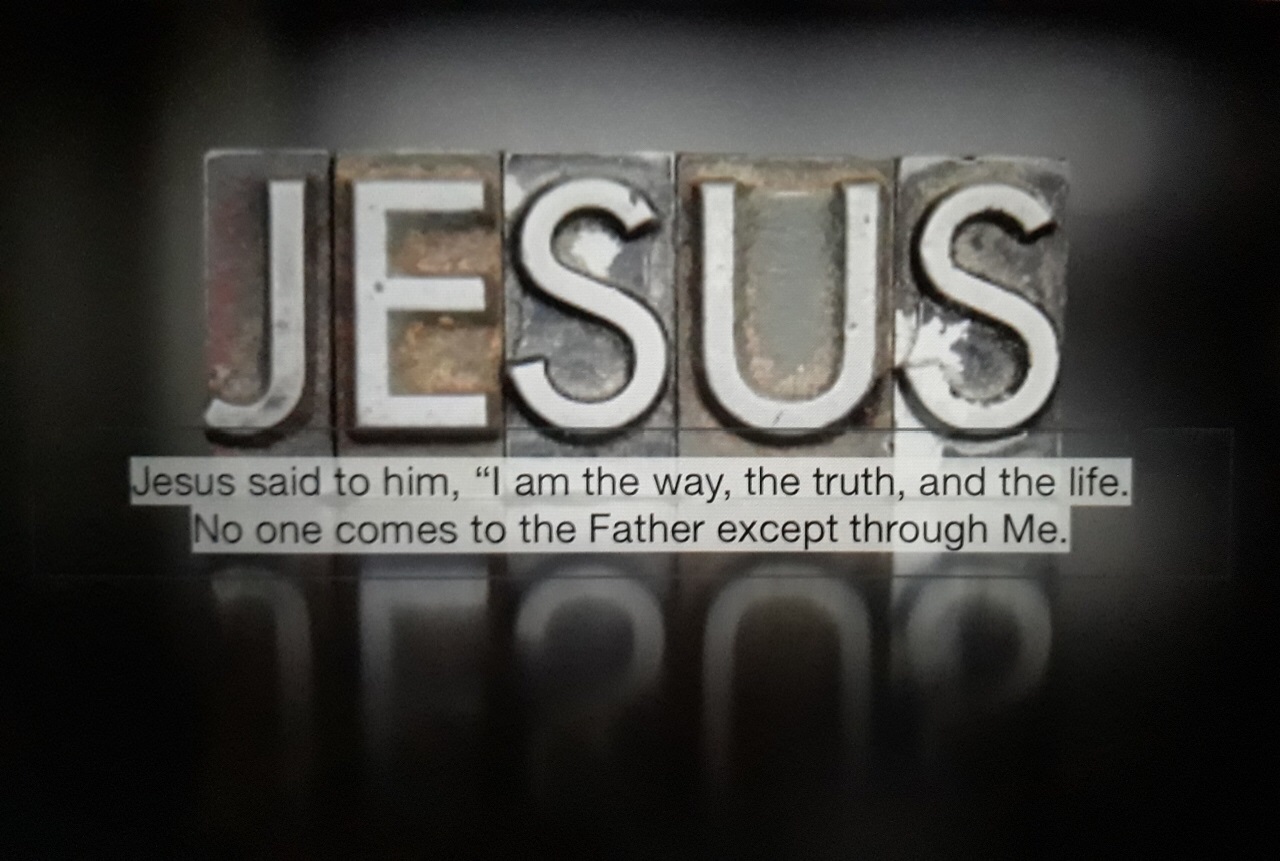
Latest comments
Hello & I listen to your u tubes often. Is God Winks books scriptural?
thank you
So true, I love this scripture reminder too.
Philippians 4:7
King James Version
7 And the peace of God, which passeth all understanding, shall keep your hearts and minds through Christ Jesus.
I can so relate. As a brand new Christian, the church I was in quickly slipped into Inner Healing and psychology. Lots more to tell, but when your faith is in Christ for everything, you're full of Joy
Good advice Greg. Thanks for your encouragement and scriptural references.
God bless you and Merry Christmas.